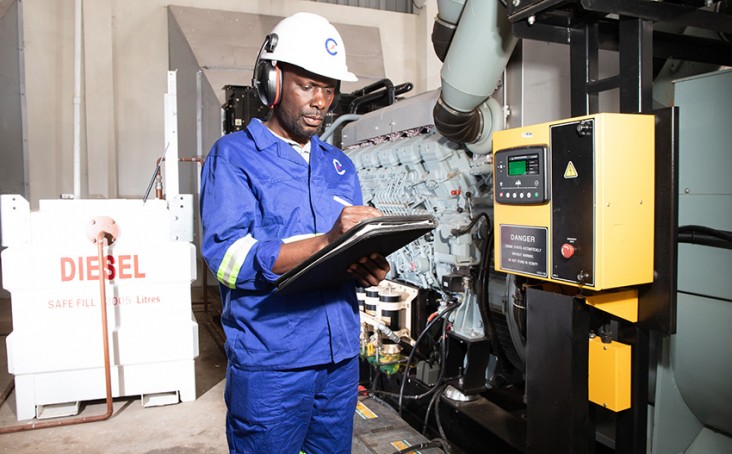- Where We Work
- Africa
- African Union
- Power Africa
- Trade and Investment
- Angola
- Benin
- Botswana
- Burkina Faso
- Burundi
- Cameroon
- Central Africa Regional
- Central African Republic
- Chad
- Côte d'Ivoire
- Democratic Republic of the Congo
- Djibouti
- East Africa Regional
- Eswatini
- Ethiopia
- Ghana
- Guinea
- Kenya
- Lesotho
- Liberia
- Madagascar
- Malawi
- Mali
- Mauritania
- Mozambique
- Namibia
- Niger
- Nigeria
- Republic of the Congo
- Rwanda
- Sahel Regional
- Senegal
- Sierra Leone
- Somalia
- South Africa
- South Sudan
- Southern Africa Regional
- Sudan
- Tanzania
- The Gambia
- Uganda
- West Africa Regional
- Zambia
- Zimbabwe
- Asia
- Europe and Eurasia
- Latin America and the Caribbean
- Middle East
- Mission Directory
Speeches Shim
Malawi
POWER AFRICA FACT SHEET
MALAWI ENERGY SECTOR OVERVIEW
With a high population density, Malawi has one of the lowest per capita GDPs in the world. The country has the capacity to generate 439 megawatts (MW), though Malawi’s heavy reliance on large hydro is often constrained by drought and low water levels. Moving forward, there is high potential for solar and new hydro technologies to enter into the power market.
Malawi’s energy sector has gone through important sector reform efforts recently, including the unbundling of the national utility, the Electric Supply Company of Malawi (ESCOM) and the establishment of the Electricity Generation Company of Malawi (EGENCO). The restructuring of Malawi’s power market is underway, with strong investor interest and political will for Independent Power Producers (IPPs) to enter the market. Power Africa (PA) is supporting 100 MWs of new solar PV generation to come online by the end of 2019.
GENERATION CAPACITY
Installed Capacity: 439 MW
-
Hydroelectric: 384 MW
- Solar: 55 MW
Power Africa New MW to Date
- Reached Financial Close: 12 MW
CONNECTIONS
Current Access Rate: 10.8%
-
Rural: 1% Urban: 46%
Households without Power: 3.2 million
- Target: 30% Access Rate by 2030
Power Africa New Grid Connections: 108,400
Power Africa New Off-Grid Connections: 163,400
INVESTMENT AND ENABLING ENVIRONMENT
Biggest Issues
- Non cost-reflective tariffs
- Access to finance
- Off-grid sector strategy
Power Africa Interventions
- IPP Transaction Advisory Support
- Regulatory Advisory Support
- Solar Home System (SHS) Kick Starter Program
POWER AFRICA’S ENGAGEMENT IN MALAWI
Power Africa is actively engaged in the development of Malawi’s power sector. Power Africa’s partnership with the Government of Malawi is solidified by a Memorandum of Understanding (MOU), which guides the implementation of Power Africa support, including USAID-funded activities that complement the $350 million Millennium Challenge Corporation (MCC) Malawi Compact, as well as broader U.S. Government electrification efforts.
MW GENERATION
In March 2017, Power Africa’s Southern Africa Energy Program (SAEP), managed by USAID, initiated support to Malawi’s electricity sector. In collaboration with MCC and the resident Power Africa Energy Advisor, SAEP supports IPPs to develop generation projects. With Power Africa support, IPPs are expected to add 185 MWs to the grid by August 2019 - a 43 percent increase in Malawi’s installed generation capacity. Power Africa also supports energy sector Public Private Partnerships, including the 300 MW Mpatamanga hydro project expected to be commissioned in 2025. Building on MCC’s electricity policy reform activities, Power Africa assisted the Malawi Energy Regulatory Authority (MERA) to evaluate ESCOM’s tariff application before issuing a revised electricity tariff in September 2018. In August 2018, USTDA signed a grant agreement with Power Africa private sector partner, JCM Power, to fund a feasibility study to support JCM’s development of solar PV generation in Golomati
CONNECTIONS
As part of the MCC Compact which ended in September 2018, EGENCO increased generation at the Nkula A hydropower plant by 12 MWs and more than doubled the throughput capacity of the network with the introduction of high-voltage substations, a new 400 KV transmission line, and upgrades to the distribution network. This allows for more efficient transfer of electricity throughout Malawi and the region by way of future interconnection with the Southern African Power Pool. In addition, Power Africa, through SAEP, recently launched the SHS Kickstarter program to increase access in underserved rural communities of Malawi.
SUCCESS STORY
In September 2018, the Government of Malawi launched the country’s first-ever competitive tender in the power sector by using the procurement framework developed with support from MCC. Twenty-one international companies submitted bids to develop 70 MW of new solar capacity. The achievement sets Malawi on a path to diversify its generation mix, bring down costs, and open its door for future rounds of private investment.


Comment
Make a general inquiry or suggest an improvement.